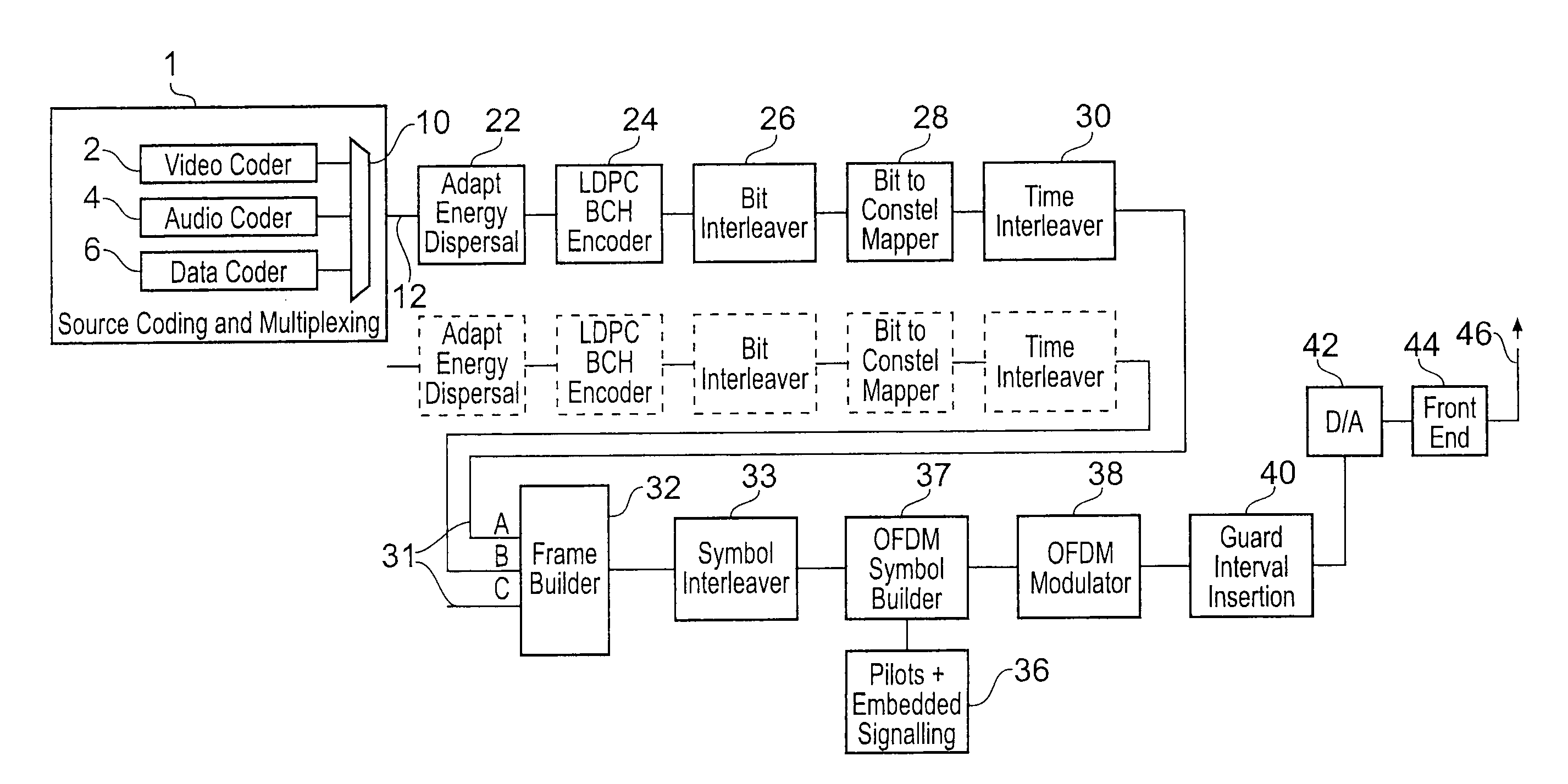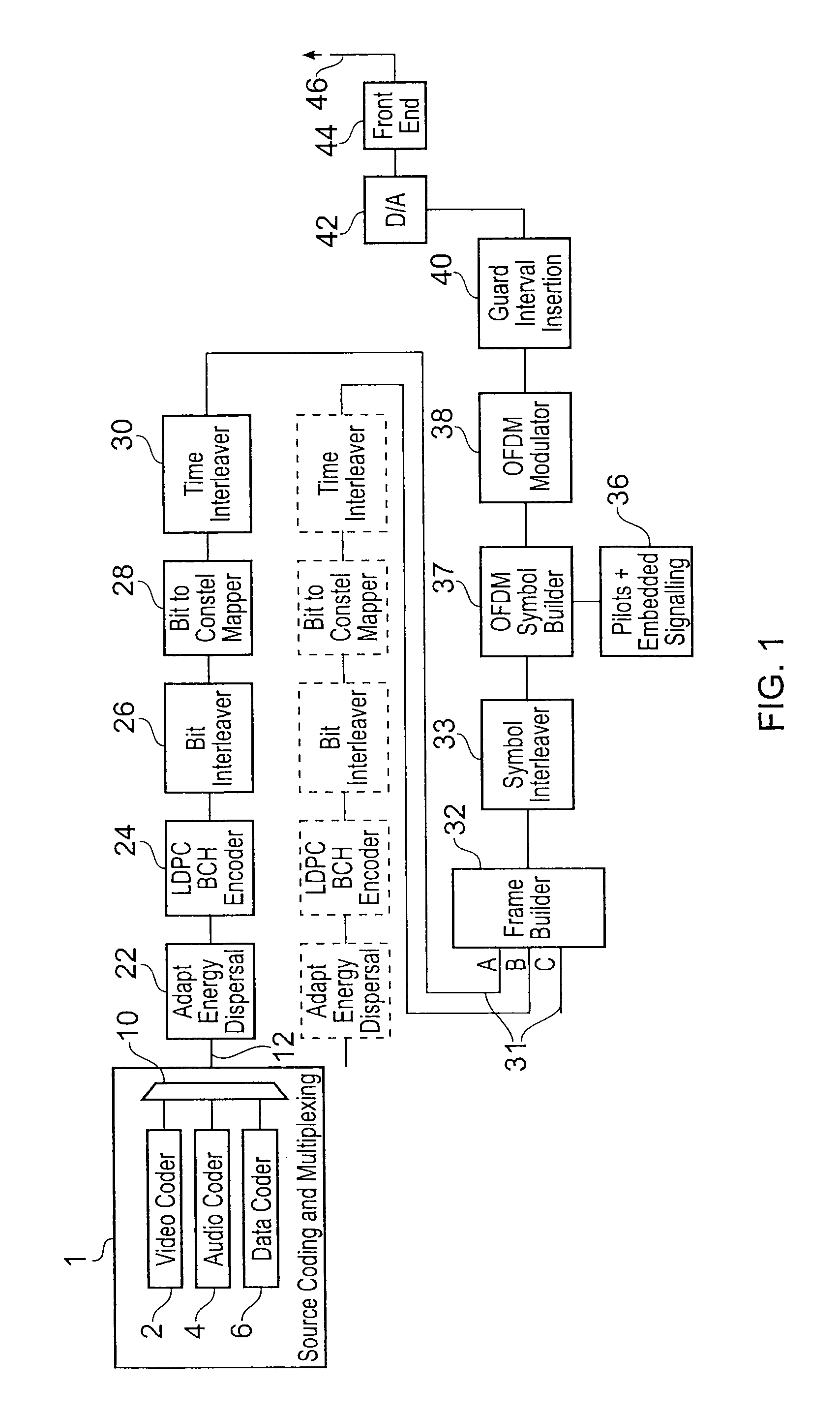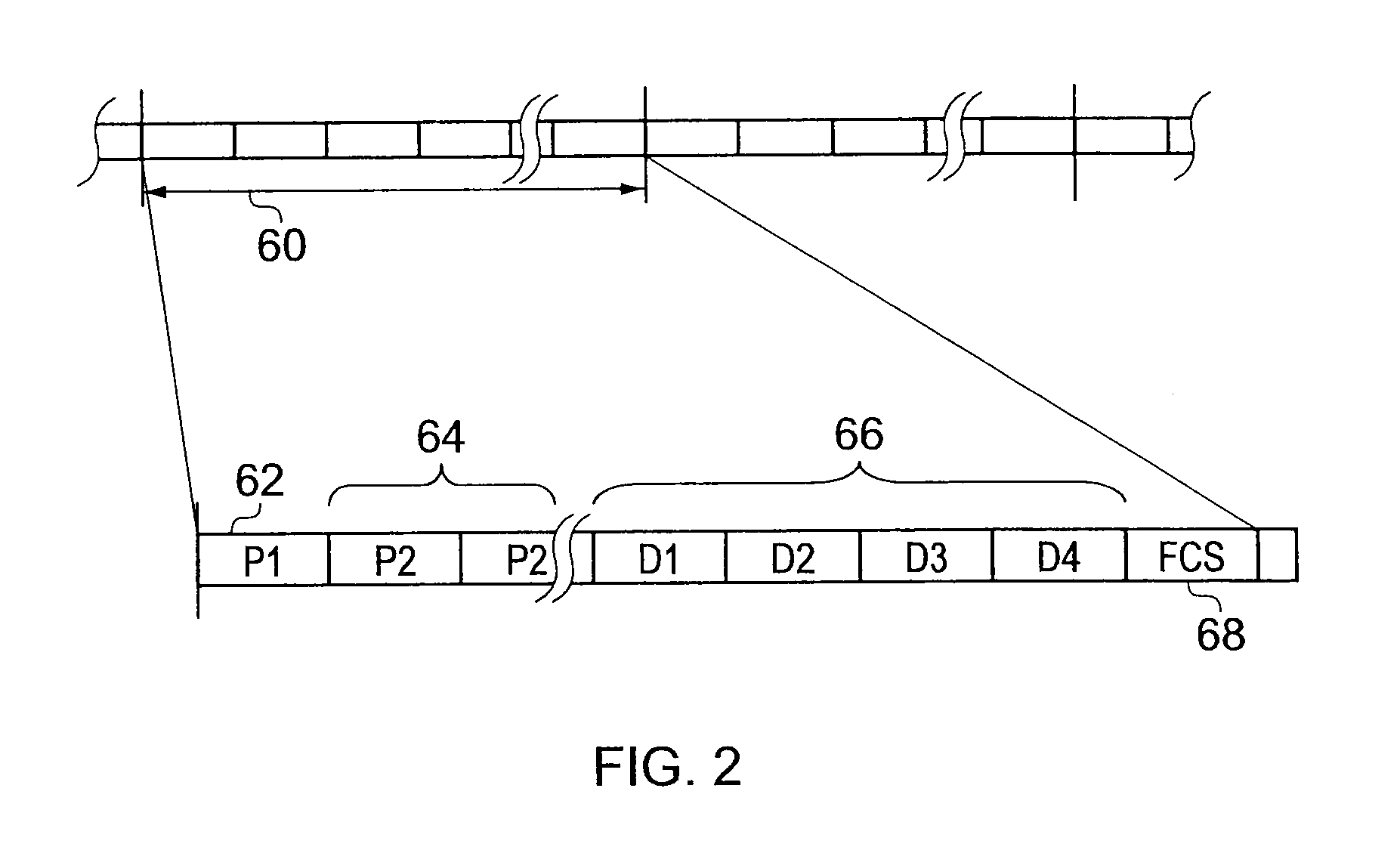Receiver and method of receiving
a receiver and receiver technology, applied in the field of receivers and methods, can solve the problem that the domain will generate an increase in noise level across the entire frequency bandwidth of ofdm symbols
- Summary
- Abstract
- Description
- Claims
- Application Information
AI Technical Summary
Benefits of technology
Problems solved by technology
Method used
Image
Examples
Embodiment Construction
[0026]In general, in an OFDM receiver, the detection and cancellation of impulsive noise can either occur in the time domain (pre FFT) or in the frequency domain (post FFT). Time-based algorithms detect the presence of impulse noise on the incoming digital samples and scale the affected samples intelligently. This type of noise cancellation is quite effective for short duration impulsive interference. The other short-coming is the loss of detection for low-energy noise bursts. In fact increasing the sensitivity, to pick up low-level impulsive noise, can lead to false-detection. This is due to an inherent nature of the OFDM signal, which includes large peak-to-average power ratios.
[0027]An alternative low-complexity frequency-domain algorithm, Impulsive Noise Detection (IND), has been developed that can complement a time domain impulsive noise cancellation or to be used on its own.
[0028]FIG. 1 provides an example block diagram of an OFDM transmitter which may be used for example to t...
PUM
 Login to View More
Login to View More Abstract
Description
Claims
Application Information
 Login to View More
Login to View More - R&D
- Intellectual Property
- Life Sciences
- Materials
- Tech Scout
- Unparalleled Data Quality
- Higher Quality Content
- 60% Fewer Hallucinations
Browse by: Latest US Patents, China's latest patents, Technical Efficacy Thesaurus, Application Domain, Technology Topic, Popular Technical Reports.
© 2025 PatSnap. All rights reserved.Legal|Privacy policy|Modern Slavery Act Transparency Statement|Sitemap|About US| Contact US: help@patsnap.com



